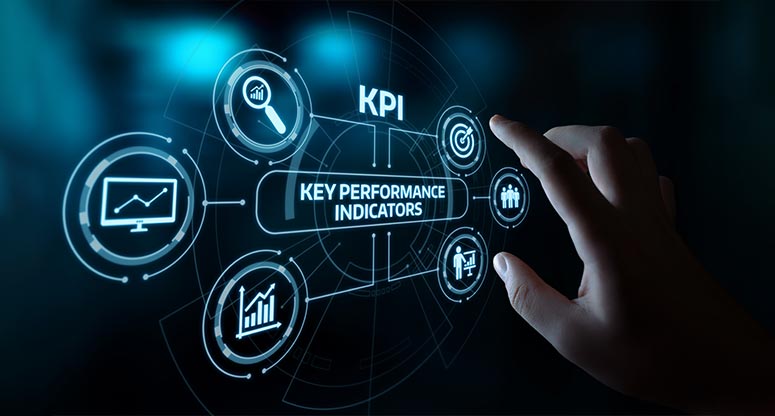Call Center Outsourcing5.5-minute read
How to Use Contact Center Data Analytics to Improve Your Customer Experience
Is your business offering the best customer experience (CX) it possibly can? And if it isn’t—are you prepared to face the consequences?

The fact is, no matter how effective your operational strategy is, no matter how effectively your sales and marketing efforts bring new customers on board, if you’re not working to provide the best possible CX, you may be sacrificing your company’s chances at growth and long-term success.
According to the 2017 Customer Service Barometer from American Express, seven in 10 U.S. consumers will spend more money on a business that delivers a great CX. And in a 2017 global Microsoft customer survey, 96% of people said the quality of customer service is important to whether they’re loyal to a business or brand.
“96% of people said the quality of customer service is important to whether they're loyal to a business or brand.” Click To Tweet
It’s clear, then, that great customer service is often what separates industry leaders from all of the run-of-the-mill competitors. Luckily, there are a number of proven ways to develop the kind of CX that gets results. And one of the most reliable of these is the smart use of contact center data analytics.
What Are Contact Center Data Analytics?
Your contact center is the foundation of your CX. It’s where agents work on your behalf to engage with people with whatever communications channels your customers prefer to use. In today’s tech-driven economy that includes not just traditional standbys such as phone, website and email, but also social media marketing, mobile apps, SMS messaging, automated chatbots and many others.

Agents work on your behalf to engage with people with whatever communications channels your customers prefer to use.
Source: www.shutterstock.com.
Get a quick overview of many forms of contact center communications.
Using contact center data analytics, you can track and measure the information you process over these channels, and then make continuous improvements based on the patterns you discover. It’s a way of answering some key questions about what is and isn’t working within your communications and marketing strategy. These questions include (but certainly aren’t limited to):
- What communications messages earn the best conversion rates?
- What type of day, week, or year do you see the most consumer activity, and how well are you adjusting to periods of higher or lower utilization?
- What channels do your customers prefer to use to contact you?
- How is the skill level or attitude of your agents affecting how customers perceive your brand?
To answer these questions, you’ll need to apply certain key process indicators (KPIs) to specific aspects of your contact center operations. Some samples of the type of standard metrics used to measure inbound communications are:
- Average hold time. How long are people on hold when they call you? Can they speak to an agent immediately, or do they have to wait—and if so, how long?
- First-contact resolution. This is the rate at which you resolve customer inquiries or questions without any need for follow-up, thereby reducing customer effort and leaving an impression of efficiency.
- Average handle time. How long does it take your agents to answer questions? Starting with initial hold time and concluding with post-conversation tasks, this metric provides an overview of the total amount of time customers have to wait before having their issues resolved.
- Abandoned call rate. Are your hold times so long that customers hang up before an agent can help them? If so, it will be reflected in your abandoned call rate. Whether the caused is an understaffed contact center, undertrained agents, or faulty technical processes, the result is always the same: higher levels of customer frustration, and lower levels of satisfaction.
- Average transfer rate. How often do incoming calls get routed to another department, or shuffled off into another queue? Transfers have a big impact on customer satisfaction, making this one of the more important metrics to measure.
Other contact center metrics go beyond inbound calls, involving more advanced interactions and operational issues like:
- Customer satisfaction. No matter which method of measuring satisfaction you use, it’s important to do your best to understand how customers perceive your company and how they feel about the service they receive from you.
- Customer churn rate. A high rate of churn means you’re having difficulty retaining customers, which means you’re working to accomplish the same task over and over, and often spending a lot to do so. As the Harvard Business Review notes, it can be 25 times more expensive to acquire new customers than to keep the ones you already have.
- Agent attrition rate. Are you experiencing high turnover among the agents who work in your call center? Whether they’re dissatisfied with their pay, working conditions or lack of opportunity for further advancement, unhappy agents almost always lead to unhappy customers.
- Cost per contact. Measuring exactly how much you spend on each customer interaction can help you pinpoint weak spots in terms of processes or personnel. It also provides valuable insight into which communications channels are most profitable, so you can adjust your strategy accordingly.

It’s important to understand how customers feel about the service they receive from you.
Source: www.shutterstock.com.
“It can be 25 times more expensive to acquire new customers than to keep the ones you already have.” Click To Tweet
Pro Tips: How to Reduce Your Customer Churn Rate in 4 Steps
Applying Data Analytics to Contact Center Metrics

Source: www.shutterstock.com.
Once you’ve put in place the KPIs to measure these and other key metrics, you’ll get a much clearer understanding of just how well your CX strategy is helping (or hurting) customer satisfaction. And, because increasing satisfaction also improves loyalty, you’ll be well positioned to continue growing and even differentiate yourself from the competition.
But how do you actually set up the process of measuring these metrics, and implementing contact center data analytics based on that info? If you run your own onsite contact center, it’s a matter of recruiting or consulting with an analytics expert who understands how to pinpoint this info and apply the findings to your specific operational needs and goals.
If that seems like more than your in-house team can handle, you’re not alone. The truth is, this is a complex process, with high stakes. As we’ve seen, the future of your business may depend upon it. For that reason, many leaders choose to outsource this important task to experts with specific experience in contact center data analytics.
With more than 20 years of experience offering contact center services to businesses of all types, Working Solutions has the expertise, tools and technological foundation to not only measure the metrics on which customer satisfaction is built, but help ensure you’re using that info to deliver the best possible CX.
Our specialists will work with you to define expectations and translate them into deliverables that result in the outcomes that matter most to your business. And when you entrust your customer communications strategy and delivery to Working Solutions, you’ll get access to advanced contact center data analytics as part of the same line-item deliverable.

Discover how we can help take your CX to the next level: Contact us today to schedule a complimentary consultation with a Working Solutions expert.
Let's connect.
This Might Interest You...
This website uses cookies to personalize and improve your experience. Continue browsing our site if you agree to our Cookie Policy or feel free to Manage Cookies yourself.


